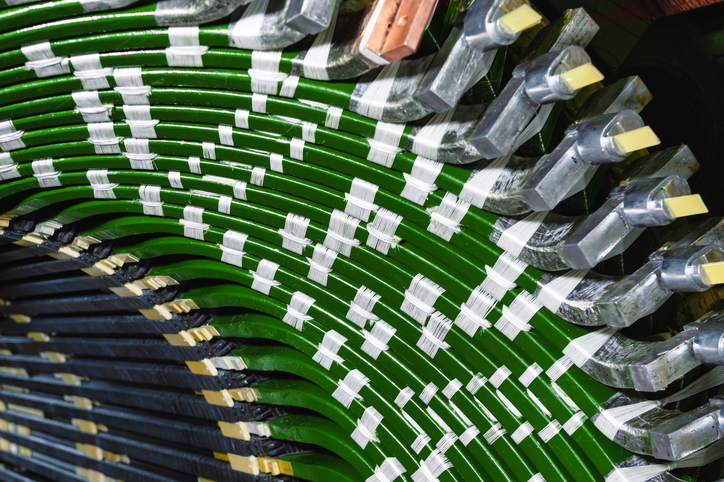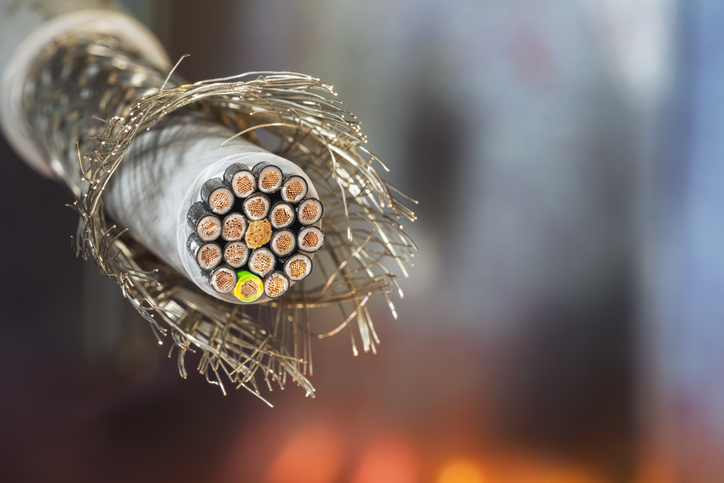Understanding When This High-Volume Process Delivers Engineering and Economic Value
Engineers evaluating manufacturing methods for electrical insulation components need to understand when rotary die cutting provides both technical and economic advantages. This high-volume process uses circular steel tools to punch precise shapes while simultaneously laminating materials with adhesive layers, making it ideal for applications requiring consistent quality and material consolidation.
Custom Solutions for Your Manufacturing Applications: Reach out to the Electrolock team today to begin discussing your next electrical insulation project.
When Rotary Die Cutting Makes Economic Sense
The economic threshold for rotary die cutting begins at volumes over a couple of hundred parts, where the initial tooling investment becomes cost-effective compared to alternative manufacturing methods. While the circular steel tools require higher upfront investment than standard punching dies, the per-part cost advantages become significant at production volumes.
Material consolidation represents a major economic benefit of rotary die cutting. The process can laminate multiple materials with adhesive layers in a single operation, eliminating separate bonding steps and reducing manufacturing time. This consolidation capability is particularly valuable for complex electrical insulation assemblies requiring precise material positioning and consistent bond strength.
Compared to laser cutting, rotary die cutting offers substantial advantages for production volumes. Laser cutting, while more precise for prototyping and smaller runs, becomes prohibitively expensive and slow for high-volume manufacturing. The speed and consistency of rotary die cutting make it the preferred choice when production volumes justify the tooling investment.
Critical Technical Advantages for Electrical Applications
The most significant technical advantage of rotary die cutting for electrical applications is the production of non-carbonized edges. Unlike laser cutting, which can create carbonized edges that may affect electrical properties, rotary die cutting produces clean, non-carbonized cuts essential for maintaining insulation integrity in electrical components.
Tolerance capabilities of rotary die cutting typically achieve precision within a few thousandths of an inch, meeting the demanding requirements of electrical insulation applications. This precision, combined with the process’s ability to handle various substrates, including films, papers, and non-wovens, makes it suitable for complex electrical insulation geometries.
Multi-layer material handling capabilities enable engineers to create complex insulation assemblies in a single operation. The process can integrate different material properties — such as dielectric strength, thermal resistance, and mechanical durability — into cohesive assemblies with consistent performance characteristics.
Material and Adhesive Selection Guidelines
Adhesive selection becomes critical when designing for rotary die cutting, as the process must accommodate the specific bonding requirements between different substrate materials. Engineers must consider adhesive compatibility with materials like steel, aluminum, and various insulation films to ensure proper bond strength and peel strength performance.
Material thickness ranges vary depending on the specific substrates and adhesive systems involved. The process accommodates various combinations of films, papers, and non-wovens, but engineers should consult with manufacturing specialists to optimize material selection for their specific applications. Chemical compatibility becomes particularly important when selecting adhesives that will maintain performance throughout the component’s service life.
Substrate material properties directly influence adhesive selection criteria. Different base materials — whether metallic, polymeric, or composite — require specific adhesive chemistries to achieve optimal bonding performance. Understanding these relationships ensures long-term reliability of the finished insulation components.
Design Guidelines and Quality Control
Geometry optimization plays a crucial role in rotary die cutting success. Engineers should design parts that maximize material utilization while minimizing waste, considering the circular motion of the cutting tool and the continuous nature of the process. Simple geometry modifications can significantly improve manufacturability and reduce material costs.
Quality control methodology relies heavily on optical comparators for precision measurement and validation. These instruments enable accurate measurement of critical dimensions, ensuring that finished parts meet the tight tolerances required for electrical insulation applications. Regular optical comparator verification helps maintain consistent quality throughout production runs.
Tooling design significantly impacts both part quality and manufacturing efficiency. Working with experienced manufacturers helps optimize tool geometry for specific applications, balancing cutting performance with tool longevity. Proper tooling design also minimizes material stress during cutting, preserving the electrical properties of sensitive insulation materials.
Application-Specific Considerations for Electrical Components
High-voltage insulation applications require particular attention to edge quality and dimensional precision. The non-carbonized edges produced by rotary die cutting help maintain dielectric integrity, while the process’s tolerance capabilities ensure consistent electrical performance across production runs.
Battery applications demand exceptional cleanliness standards that rotary die cutting can accommodate through proper process controls. The ability to create complex shapes with integrated adhesive layers makes this process particularly suitable for battery insulation components requiring precise fit and consistent performance.
Thermal barrier applications benefit from the process’s ability to maintain material properties through the cutting operation. Unlike thermal cutting methods that may alter material characteristics, mechanical cutting preserves the thermal performance of specialized insulation materials.
Maximizing Manufacturing Success With Electrolock
Successful rotary die cutting for electrical insulation requires understanding the intersection of volume economics, technical requirements, and material capabilities. Engineers should evaluate their specific volume requirements against the process’s economic threshold while considering the technical advantages of non-carbonized edges and material consolidation capabilities.
Contact Electrolock today to discuss how rotary die cutting can optimize your electrical insulation manufacturing requirements while delivering the precision and consistency your applications demand.




